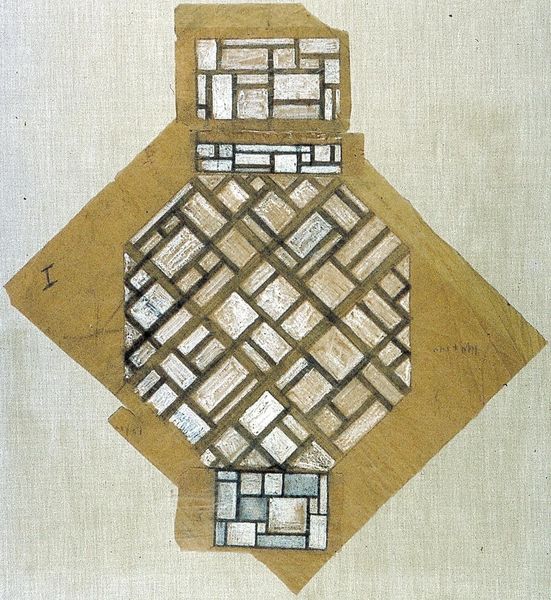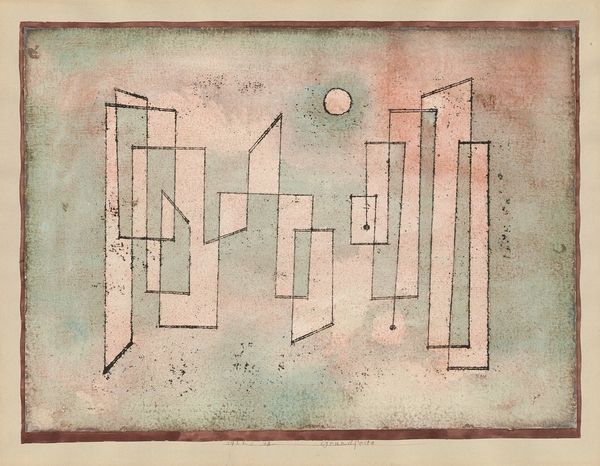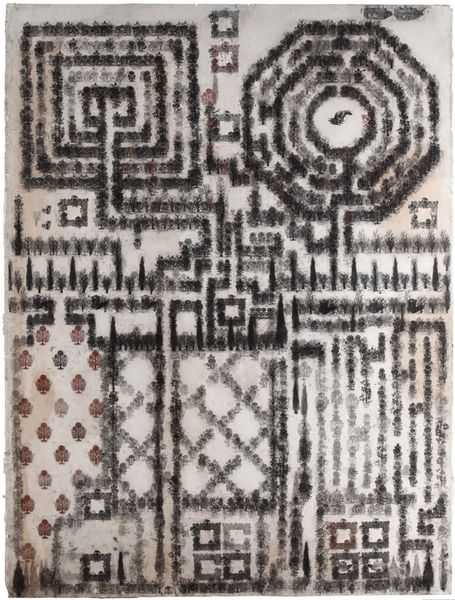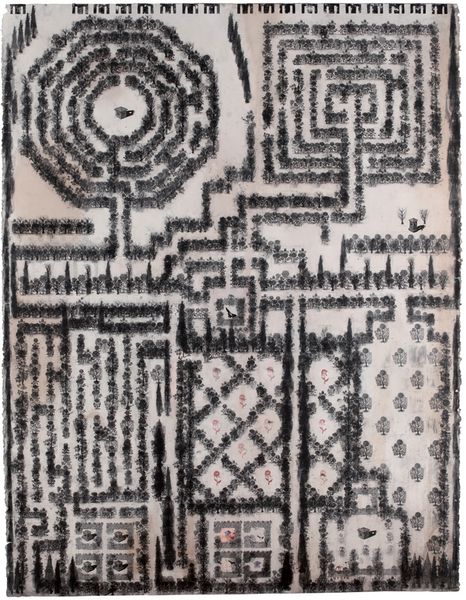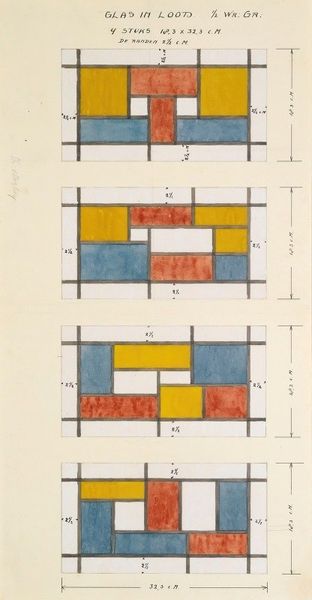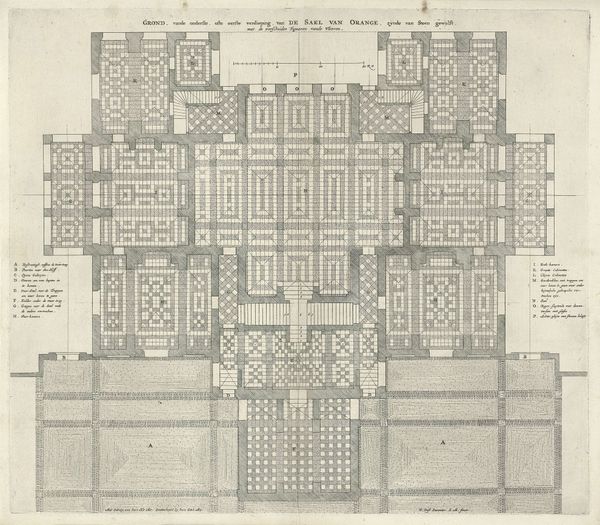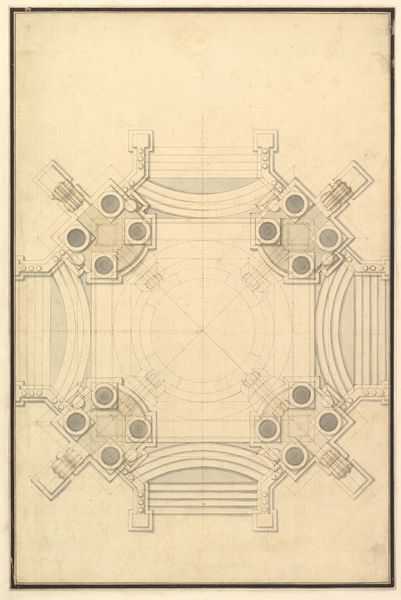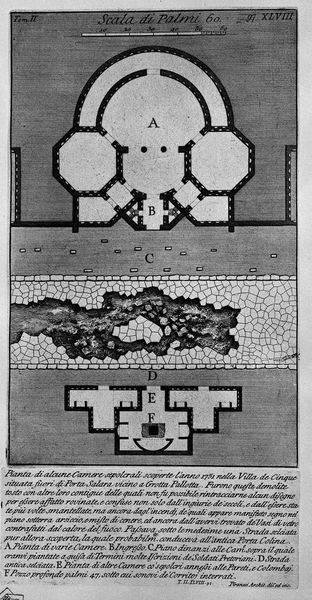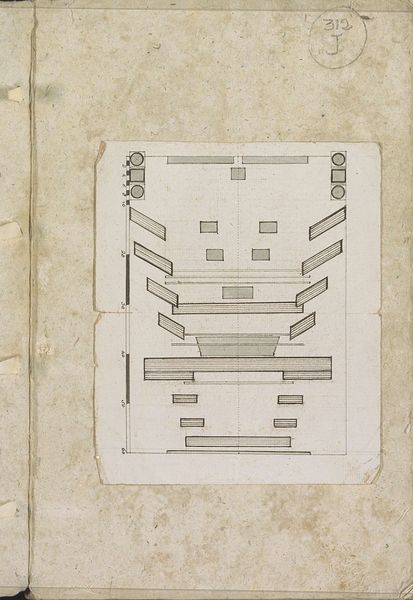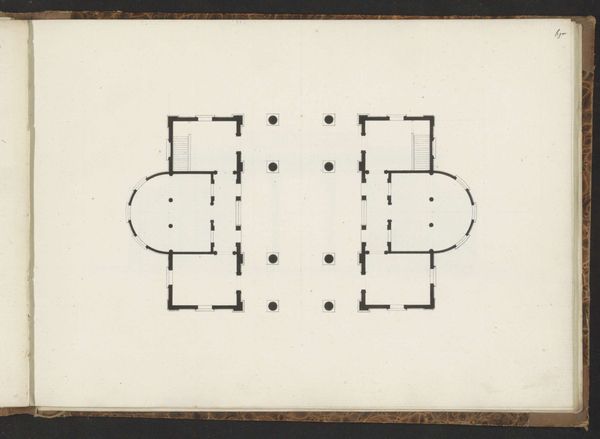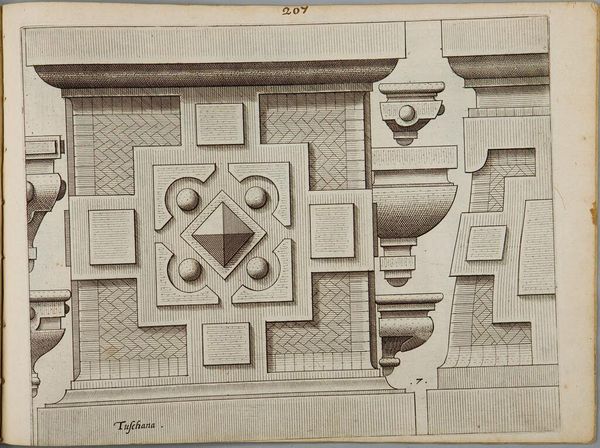
drawing, coloured-pencil, pencil
#
drawing
#
coloured-pencil
#
geometric
#
pencil
#
geometric-abstraction
#
abstraction
#
line
#
modernism
#
watercolor
Copyright: Gosta Adrian-Nilsson,Fair Use
Curator: Take a look at this piece—it's a drawing titled "Composition" by Gosta Adrian-Nilsson. The artwork is rendered in pencil and colored pencil, primarily featuring geometric shapes and lines. Editor: Hmm, my initial impression is a sense of architectural planning, like a blueprint for a very ordered, almost rigid building. The green and brown color scheme is quite earthy. Curator: Absolutely, the composition’s formal elements contribute significantly to this feeling of structure. Note how Adrian-Nilsson utilizes lines to demarcate each geometric section and repeats specific shapes and forms symmetrically around a central square. The drawing feels meticulously planned, an exploration of formal relations and pure geometry reminiscent of early modernist architectural studies. Editor: It feels almost like a meditation on order and space, reflecting the burgeoning industrial aesthetic and the era’s focus on urban development in early 20th century Europe. It would be interesting to investigate if the artist was ever involved in architectural planning in Sweden. Curator: A key part of its modernity stems from the line and layering of color itself; the lines vary in weight and thickness to produce implied movement around the centrally composed axis. This attention to formal characteristics—the surface quality, texture, and overall arrangement—becomes critical for understanding what Adrian-Nilsson appears to communicate, or at least emphasize: a certain distillation of form to its bare essentials. Editor: I am wondering how this abstraction connects to the artist's broader body of work, though. Considering the social context, was he interested in social reform and how did this impact abstraction? How might this geometrical composition speak to those ideals or serve as an aesthetic expression of change? Curator: It is true, approaching it formally risks stripping the drawing of all its contextual relevance. Yet, analyzing these components enables us to unpack the layered intent embedded within "Composition’s" simple facade. Editor: It definitely encourages us to examine it more critically, appreciating how an artist interacts with art, culture, and the changing times. Curator: Agreed. Examining works such as this makes us more aware of how modern art has become a confluence of structure and meaning in our contemporary lives.
Comments
No comments
Be the first to comment and join the conversation on the ultimate creative platform.
